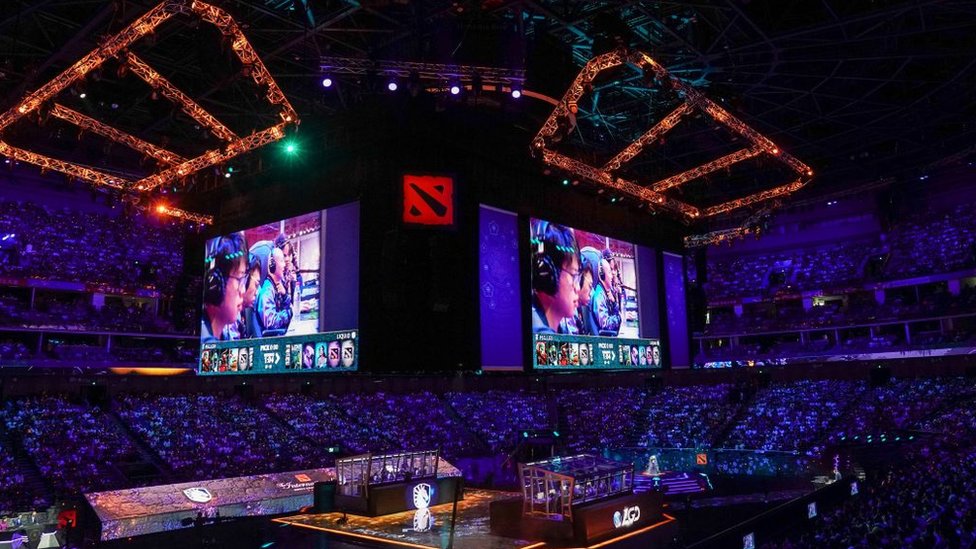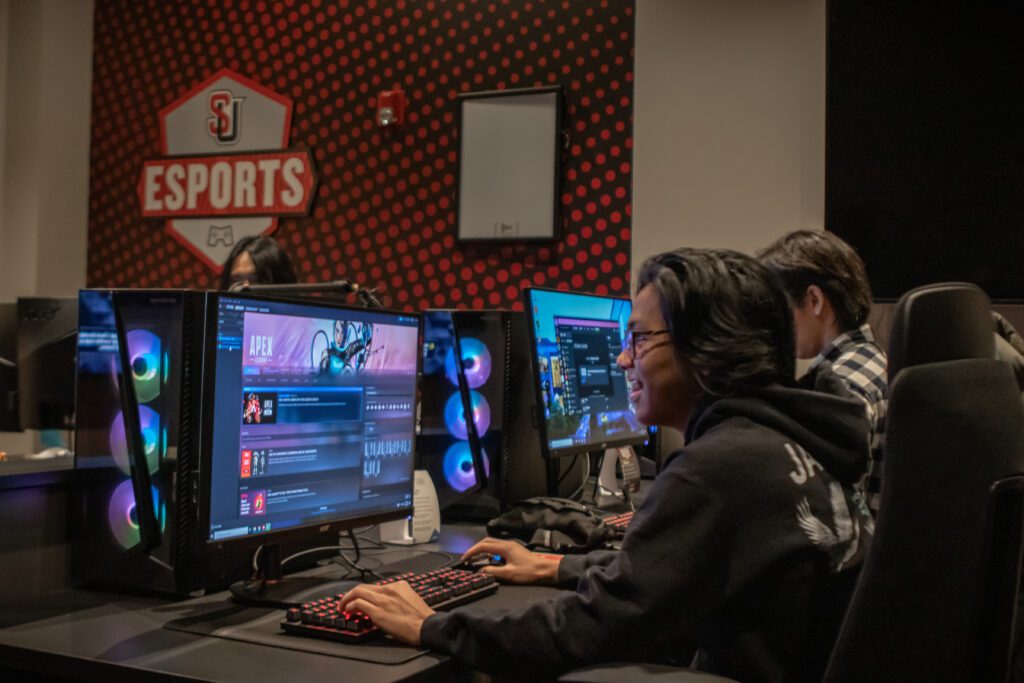If you think esports is just a bunch of gamers playing in their bedrooms, think again. Over the last decade, what started as casual matches among friends has evolved into a multi-billion-dollar industry, featuring roaring arenas, star players, and fans tuning in by the millions worldwide. But behind every jaw-dropping play and clutch victory, there’s something most people don’t see: esports infrastructure. This is the unsung hero: the powerful tech, smart systems, and behind-the-scenes magic that keep top teams winning both in the game and out of it.
What is Esports Infrastructure?
Simply put, esports infrastructure refers to all the physical and digital resources that enable an esports team to run smoothly. This includes everything from the technology players use to train and compete to the websites that showcase the team’s brand, and the communication tools that connect players, coaches, and staff.
Without this infrastructure, even the best players would struggle to perform at their highest level. Just like traditional sports teams need stadiums, gyms, and trainers, esports teams rely on powerful computers, fast internet, strategic coaching, and strong digital platforms to stay competitive.
Physical Components of Esports Infrastructure
The foundation of any esports team’s infrastructure often starts with a team house. This is a dedicated space where players live, practice, and sometimes even create content. Having a reliable internet connection here is crucial. It ensures players can practice online without lag and participate in tournaments seamlessly.
A team house is equipped with high-end gaming PCs or consoles, gaming peripherals, and comfortable spaces for relaxation and strategy discussions. It’s not just about having the best hardware but also about creating an environment where players can focus, improve, and build chemistry with teammates.
The Digital Backbone: Tools and Software
Beyond the physical space, the digital side of esports infrastructure includes communication platforms like Discord or Slack, scheduling tools for booking practice matches (scrims), and software for reviewing gameplay footage.
Coaches and analysts rely heavily on these tools to break down matches and find ways to improve. These platforms enable seamless collaboration, helping teams stay organized and strategize effectively. This infrastructure is critical for teams aiming to compete at the highest level.
Building a Strong Web Presence
In today’s esports scene, having a professional website is essential. It acts as the team’s home base for fans, sponsors, and media. Teams use their sites to share news, stream videos, sell merchandise, and highlight their achievements.
To keep these websites fast and reliable, especially during big tournaments or product launches, teams depend on trusted web hosting services with high performance and support. For example, many esports organizations use web hosting with dedicated features from IONOS, which ensures their sites stay online and load quickly even when thousands of visitors arrive at once.
A strong website not only enhances fan experience but also attracts sponsors who want to be associated with a professional, well-maintained platform. Good web hosting is more than just keeping a site live; it’s about maintaining a brand’s reputation and providing a seamless digital experience.
Content Creation and Fan Engagement
Content is king in esports, and creating engaging videos, social media posts, and livestreams is part of the esports infrastructure that fuels growth. Teams often hire content creators, editors, and social media managers to keep fans engaged between competitions.
By sharing behind-the-scenes footage, interviews, and highlights, teams build a loyal community. This ongoing engagement increases merchandise sales, sponsor interest, and overall fan support. Content infrastructure requires planning, the right software, and reliable platforms for streaming and uploading.
Behind the Scenes: Business and Administration
While the spotlight shines brightly on the players, coaches, and thrilling matches, there’s an equally important team working tirelessly behind the scenes: the business and administration staff. These individuals handle everything from negotiating player contracts and arranging travel plans to securing sponsorship deals and managing day-to-day operations. Without their expertise, the whole organization would struggle to function.
This administrative side of esports infrastructure relies heavily on modern digital tools to keep everything running smoothly. Secure email systems ensure confidential communication between players, agents, sponsors, and tournament officials. Cloud storage platforms hold crucial documents, media assets, and match footage securely and make them accessible from anywhere in the world. Meanwhile, payment processing software handles player salaries, prize winnings, and vendor invoices with precision.
Operations managers and general managers often use specialized software designed specifically for esports or sports management. These tools help coordinate complex schedules, balancing practice times, travel itineraries, tournament deadlines, and media appearances. They also assist with logistics like booking flights, hotels, and transportation, which can be especially challenging when teams compete internationally.
Even though fans rarely see this side of the business, it is the backbone of a professional esports team’s success. When these systems work flawlessly, players can focus on their gameplay and performance. When they don’t, issues like missed flights, scheduling conflicts, or contractual disputes can quickly derail a team’s progress.
Growing Pains: Scaling Your Esports Infrastructure
Starting an esports team is exciting but also overwhelming, especially when it comes to building infrastructure. Many new teams feel the pressure to have it all figured out right away, but the truth is that effective esports infrastructure grows step by step, evolving with the team’s needs.
At the beginning, teams can get by with basic but reliable setups: a clean, functional website to share news and updates; straightforward scheduling tools to book scrimmages; and dependable communication platforms so players and staff can stay connected. These essentials create a foundation to build upon.
As the team expands, adding more players, competing in multiple games, or growing their fanbase, the infrastructure needs become more complex. Professional coaching software that analyzes gameplay footage and tracks player stats can improve training sessions. Cloud storage solutions provide scalable space for video libraries, graphics, and social media content. Dedicated content production studios may be set up to create high-quality videos and live streams that engage fans.
Choosing scalable, flexible services from the start can save a lot of headaches later. For instance, selecting web hosting with options to increase bandwidth and storage ensures that a team’s website won’t crash or slow down during big tournament days or merchandise launches. Investing in adaptable digital tools means the team can respond quickly to growth without scrambling to replace outdated systems.
Common Mistakes in Esports Infrastructure
Even some of the most promising esports teams stumble when it comes to building their infrastructure. One of the biggest pitfalls is going for the cheapest option, especially in web hosting. It might save money initially, but can cause major problems later, such as slow loading times, frequent downtime, or security vulnerabilities during critical moments like tournaments or sponsorship announcements.
Other teams underestimate how important strong digital communication and organization tools are. Without reliable platforms for scheduling, messaging, and file sharing, teams can experience missed practice sessions, confusion about scrim times, or lost strategy files. This kind of chaos not only affects performance but can also damage team morale.
Another common mistake is putting all the focus on player skill development while ignoring support systems. Even the best players need coaches, analysts, mental health resources, and solid logistics to stay at the top of their game. Neglecting infrastructure increases the risk of player burnout, mismanagement, and inconsistent results.
Ultimately, the key to long-term success is a balanced investment in both the people and the infrastructure that supports them. Teams that prioritize solid foundations, reliable technology, clear communication, and professional business operations are the ones that thrive year after year.
Planning for the Future
Building strong esports infrastructure means thinking ahead. Teams that invest in flexible, scalable systems and plan their digital presence carefully are better prepared for growth and new opportunities.
In esports, the competition is fierce, and every advantage counts. Having the right infrastructure allows teams to adapt quickly, avoid common pitfalls, and maintain consistency across all aspects of the organization.
The Backbone of Esports Success
Esports infrastructure might not be as flashy as a highlight reel or a championship trophy, but it is the backbone of any successful team. From the physical spaces where players train to the websites that engage millions of fans, every part of this infrastructure works together to create a winning environment.
The next time you watch your favorite esports team compete, remember the careful planning, technology, and support behind their performance. With the right esports infrastructure in place, teams can focus on what they do best, playing great games and entertaining fans worldwide.



